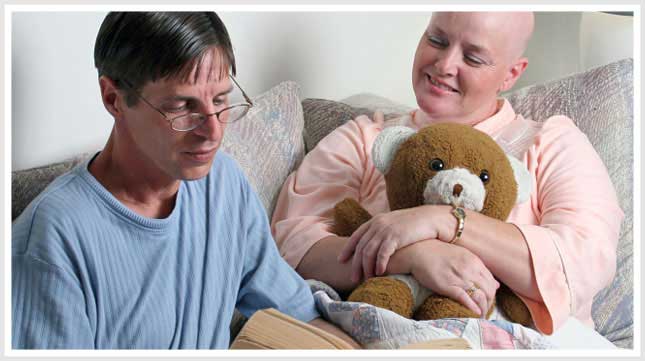
FOR MANY, HAIR LOSS IS A DIFFICULT SIDE EFFECT OF CANCER TREATMENTS. HAIR LOSS CAN AFFECT YOUR SELF-ESTEEM, CONFIDENCE AND OUTLOOK ON LIFE.
One of the worrisome aspects of cancer treatment is the possibility of hair loss. Many people lose all of their hair, while others undergoing treatment don’t lose any at all. If you are dealing with the possibility of hair loss, it’s important to talk with your doctor, hairstylist, family and friends. Take care of your hair the best you can during treatments and learn how to handle the time when your hair is growing back. Hair loss doesn’t have to affect your sense of self-worth or quality of life.
Hair care during cancer treatments
Use a gentle shampoo and moisturizing conditioner. Steer clear of any products with alcohol, menthol, camphor and salicylic acid, which can dry your hair and/or be irritating to your scalp.
Avoid using blow-dryers, curling irons, flatirons and other heated styling tools. Postpone any hair coloring or other chemical hair treatments until your doctor tells you that it’s fine to resume them.
Talk with your stylist about losing your hair and the option of shaving your head, instead of dealing with it falling out in clumps. Cut a lock of your hair and put it aside, in case you want to match your natural hair color with a wig or hair extensions at a later date.
Dealing with hair loss after cancer treatments
During chemotherapy or radiation treatments for cancer, your hair follicles become weak, resulting in hair loss for many patients. You may start to see hair loss as soon as seven days after your treatments begin. Chemotherapy can cause hair loss all over your body, while radiation treatment affects only the particular part of the body receiving the treatment. Whether your hair thins, falls out in patches or falls out all over, rest assured that it will grow back once your treatment is completed.
- Establish a support system
Coping with hair loss for any reason can be extremely difficult. Many people find it easier to face the challenge with a solid support system of relatives, friends and other cancer patients going through the same issues. You may find it extremely helpful to be able to meet other men and women facing cancer treatments, to talk about their experiences and emotions. If your health professional doesn’t refer you to a local support organization, counselor or oncology social worker, you can find online support groups. Recover with Confidence, Lookgoodfeelbetter.org,CancerCare.org and other Web sites may help. A community of supporters can offer strength, courage and peace of mind as you go through this very difficult time.
You can always wear a hat, scarf, turban or other head covering, but you may also want to consider purchasing a wig or two to disguise your hair loss. Check out our other articles for tips on choosing a wig as well as information about the history and evolution of wigs and hairpieces.
To look good and feel good about yourself, take the focus off your hair loss and put it on your beautiful assets. Women who have lost hair from cancer treatments may find it beneficial to get a minimakeover. Head to your local makeup counter to learn some tips and tricks on how to play up your best features.
Your makeup doesn’t have to be overdone or dramatic. Instead, use a shimmery eye shadow, a precise eye liner and a couple of coats of mascara to emphasize your amazing eyes. To get a perfect pout and lipstick that lasts all day, fill your lips in entirely with lip liner in a shade that closely matches your natural lip color. The lip liner will create a foundation for your lipstick to help it last longer. After applying your lipstick, add a dab of lip gloss in the center of your lips and then smack them together for some extra shine. Red lipstick is always a fantastic choice (avoid reds with orange undertones — they make teeth look yellow). And right now, plum lipstick also is a fabulous option.
When it comes to fashion, experiment with color instead of always wearing black. Bright colors and fun patterns can liven up your wardrobe and your outlook! This year, prints are definitely trendy — black-and-white prints, abstract watercolor patterns and even polka dots are back in style.
By maintaining a solid support system, considering wigs and other hair coverings and accentuating the positives, you can feel good and look good — before, during and after cancer treatments.